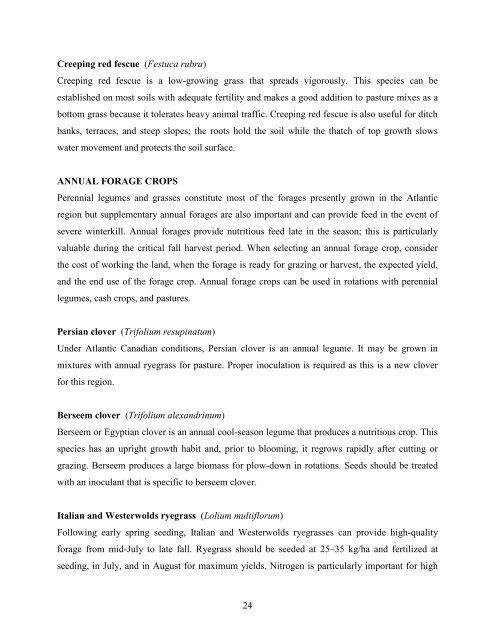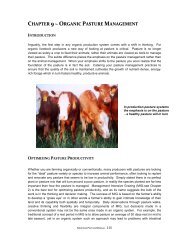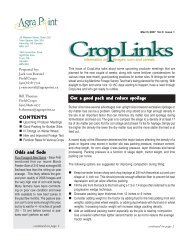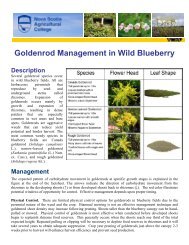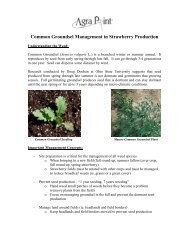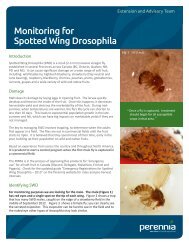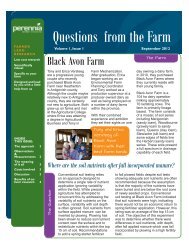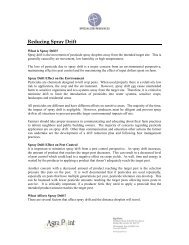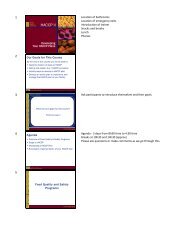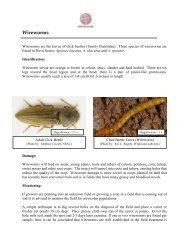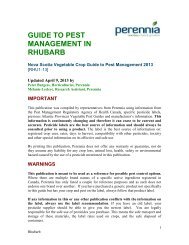You also want an ePaper? Increase the reach of your titles
YUMPU automatically turns print PDFs into web optimized ePapers that Google loves.
Creeping red fescue (Festuca rubra)<br />
Creeping red fescue is a low-growing grass that spreads vigorously. This species can be<br />
established on most soils with adequate fertility and makes a good addition to pasture mixes as a<br />
bottom grass because it tolerates heavy animal traffic. Creeping red fescue is also useful for ditch<br />
banks, terraces, and steep slopes; the roots hold the soil while the thatch of top growth slows<br />
water movement and protects the soil surface.<br />
ANNUAL FORAGE CROPS<br />
<strong>Perennia</strong>l legumes and grasses constitute most of the forages presently grown in the <strong>Atlantic</strong><br />
region but supplementary annual forages are also important and can provide feed in the event of<br />
severe winterkill. Annual forages provide nutritious feed late in the season; this is particularly<br />
valuable during the critical fall harvest period. When selecting an annual forage crop, consider<br />
the cost of working the land, when the forage is ready for grazing or harvest, the expected yield,<br />
and the end use of the forage crop. Annual forage crops can be used in rotations with perennial<br />
legumes, cash crops, and pastures.<br />
Persian clover (Trifolium resupinatum)<br />
Under <strong>Atlantic</strong> Canadian conditions, Persian clover is an annual legume. It may be grown in<br />
mixtures with annual ryegrass for pasture. Proper inoculation is required as this is a new clover<br />
for this region.<br />
Berseem clover (Trifolium alexandrinum)<br />
Berseem or Egyptian clover is an annual cool-season legume that produces a nutritious crop. This<br />
species has an upright growth habit and, prior to blooming, it regrows rapidly after cutting or<br />
grazing. Berseem produces a large biomass for plow-down in rotations. Seeds should be treated<br />
with an inoculant that is specific to berseem clover.<br />
Italian and Westerwolds ryegrass (Lolium multiflorum)<br />
Following early spring seeding, Italian and Westerwolds ryegrasses can provide high-quality<br />
forage from mid-July to late fall. Ryegrass should be seeded at 25–35 kg/ha and fertilized at<br />
seeding, in July, and in August for maximum yields. Nitrogen is particularly important for high<br />
24


